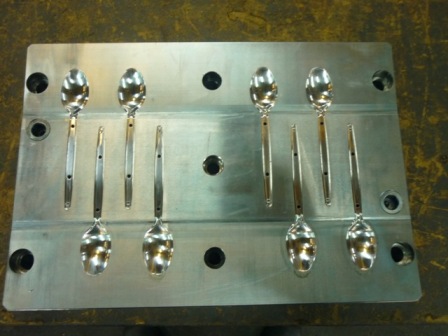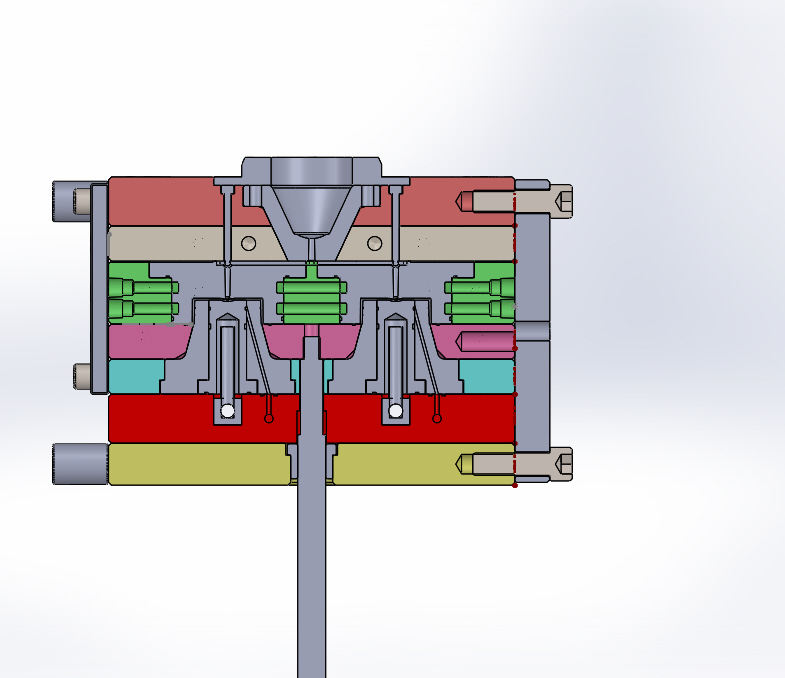- Home
- Lean Principles
- Machine Selection
- Mold Design
- Mold Interlocking
- Mold Making
- Plastic Material Technology
- Molding Process
- Plastic News
- What's New
- Privacy Policy
- Disclaimer
- Site Map
- Poll
- Polishing
- 3D Rapid Prototyping
- Molding Companies
- Contact Us
- Proven Thinwall Packaging Mold Designs For Sale
- MOLD WEIGHT CALCULATOR
- HOT RUNNER VERSUS COLD RUNNER
Mold Polishing Tips For Injection Molds
Mold polishing is primarily a manual process requiring a high level of skill and knowledge. There are a number of finishes available to mould makers and the final finish depends upon the plastic part requirements.

Types of Finishes in Mold Polishing
The most basic type of finish is a "stoned” finish which uses stone abrasives to get a matt finish. They range from 100 grit(roughest) to 1200 grit (finest). This is the cheapest & quickest form of polishing. Normally used to remove machining marks for the purpose of easy part ejection during molding.
Also, when a grit blasted finish is required, the surface must be stone finished first in order to get a quality grit blasted surface finish.
Then there are “paper finishes” which is essentially a fine abrasive attached to paper which is used after stoning to get some level of gloss on the mold tool surface. The plastic part will also replicate this same level of gloss on its surface.
Finally there is the mirror polish. There are different levels of mirror polishing the highest level looks just like a glass mirror and is used for lens parts. This is the most expensive and time consuming type of finish to achieve and needs the first 2 stages (stoning and papering) to be completed before mirror polishing can begin. Mirror polishing requires the use of a buffing wheel & is often referred to as buffing.
Know The Minimum Type of Finish Required.
In order save costs and time a mould maker must know the minimum type of finish required in mold polishing. The best way to do this is to find several sample parts of different finishes and get your customer to approve the minimum requirement. This sample can then be passed on to the mould polisher so he can replicate the required finish.
Also, knowing if the polished finish is for functional or cosmetic reasons helps in deciding the type of finish. A stoned finished is usually the minimum requirement for functional reasons (for easy ejection off the mold tool core). Mirror polished mold tool surfaces will more likely give part ejection difficulties especially for deep parts with little or no draft. This will result in longer cycle times and more part quality issues. So avoid mirror polishes if possible.
Polishing H13 Tool Steel versus 420 Stainless Tool Steel.
Different grades of tool steels will require a different approach when mirror polishing. For example: it takes more time to polish stainless steel than H13 steel. Before the mirror polish stage can be started on H13 steel a stoned finish of 600 grit is required whereas on stainless steel a stoned finish of 1000 grit is required which is 3 grades finer than 600 grit stone abrasive. This takes more time.
In addition to this, at the start of the mirror polishing stage, stainless steel must begin with a coarser grade of diamond paste (18micron paste) compared to H13 (8micron paste). So this stage also takes more time so expect to pay a premium.
Orange Peel Effect
The orange peel finish sometimes seen on plastic parts is a result of poor polishing techniques. If this type of finish is not adequate for your parts then the mold tool surface needs to be repolished with a lot more care.
The Polishers Ability.
A person’s ability to polish is very important when it comes to the final quality. Different polishers have slightly different ways to polish which they have developed during years of practice. The ultimate guide of a good polisher is one who can deliver the required finish on time at a reasonable price. Unfortunately, these types of polishers are becoming harder & harder to find.





